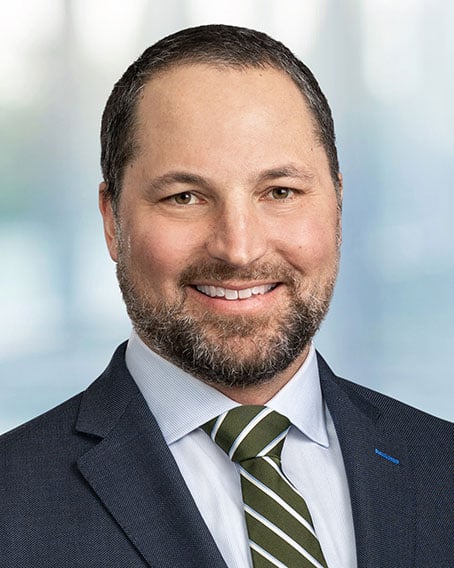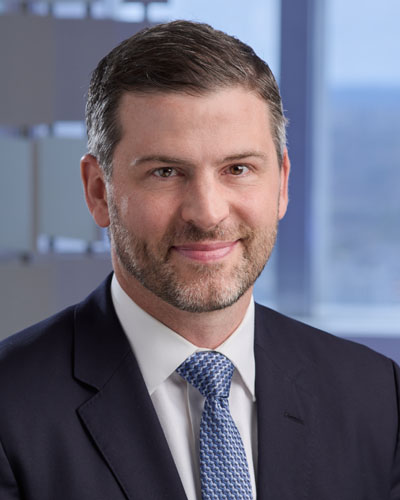Introduction
On June 22, 2020, the Supreme Court issued its decision in the closely watched Liu v. SEC case, holding that the SEC has statutory authority to seek disgorgement so long as the amount of disgorgement does not exceed the defendant’s net profits and is awarded for victims. The Court’s decision leaves undisturbed the Court’s 2017 ruling in Kokesh v. SEC, which held that claims by the SEC for disgorgement are subject to the five-year statute of limitations set forth in 28 U.S.C. § 2462.1
The SEC has express statutory authority to seek disgorgement in administrative proceedings, but no similar explicit statutory authority in enforcement matters brought in federal court. The SEC has relied upon the ability to seek disgorgement as an equitable remedy to recover ill-gotten gains from defendants in court proceedings. The Court’s decision in Kokesh specifically declined to address whether or not the court-fashioned remedy of disgorgement was authorized in the first place. Practitioners and commenters seized on the Court’s famous “Footnote 3” to question whether the SEC was able to recover disgorgement at all.2 A ruling limiting this disgorgement authority would have deprived the SEC of a key component of its enforcement authority.
While the Liu decision upholds the SEC’s general disgorgement authority, it is not an unqualified victory for the SEC. Rather, the Court suggested any such disgorgement should be limited (1) to situations in which the disgorged amount can be disbursed to aggrieved investors, and not just deposited in the U.S. Treasury; (2) to the specific defendant’s profits, rather than all profits from the alleged enterprise; and/or (3) to account for the deduction of legitimate business expenses.
The Kokesh Decision
The Liu decision picks up where the Court’s 2017 decision in Kokesh left off. In Kokesh, the Court unanimously held that “disgorgement” operates as a “penalty,” rendering claims for disgorgement subject to the five-year statute of limitations set forth in § 2462.3
The Court explicitly declined to address whether or not courts have authority to issue SEC disgorgement in its now infamous Footnote 3.4 The Court explained that, beginning in the 1970s, the SEC persuaded federal courts to order disgorgement as part of the courts’ “inherent power to grant relief ancillary to an injunction,” at a time when the SEC’s only available statutory remedy in enforcement proceedings was injunctive relief barring future violations of securities laws.5
The Liu Decision: SEC Has Disgorgement Authority, with Limits
The Court’s decision in Liu addresses that open question from Kokesh, holding that the SEC has the power to seek disgorgement in civil enforcement proceedings as a form of equitable relief within certain parameters. Under Kokesh, such claims remain subject to § 2462’s five-year limitations period absent legislative intervention.
In 2017, a California district court granted summary judgment for the SEC, finding that Charles Liu and Xin “Lisa” Wang (together “Petitioners”) misappropriated funds raised from investors, and granted the SEC’s request for disgorgement and civil monetary penalties.6 Petitioners appealed to the Ninth Circuit, arguing that the district court lacked the power to order disgorgement because disgorgement was not an equitable remedy under Kokesh and that the district court erroneously calculated the disgorgement amount by failing to offset legitimate business expenses. The Ninth Circuit rejected Petitioners’ argument, finding that “Kokesh expressly refused to reach this issue” and that the disgorgement calculation was proper.7
In Liu, the Supreme Court held that a disgorgement award that does not exceed a wrongdoer’s net profits and is awarded for victims is a permissible form of equitable relief in an SEC enforcement action. In so holding, the Court noted that equity courts have “routinely” deprived wrongdoers of their net profits from unlawful activity, even though they have ordered such “profits awards” under various different names, such as accounting or restitution.8
The Court also noted, however, that to avoid transforming a profits award (such as disgorgement) into a penalty, equity courts have historically restricted the remedy in three ways: (1) by imposing a constructive trust; (2) by limiting the remedy to individuals or partners engaged in concerted wrongdoing, and not against multiple wrongdoers under joint-and-several liability; and (3) by limiting awards to net profits from the wrongdoing,9 except where the “the ‘entire profit of a business or undertaking’ results from the wrongdoing[.]”10
The Court found that, over the years, courts have awarded disgorgement in “three main ways that test the bounds of equity practice,” as described below, and noted that “the Kokesh Court evaluated a version of the SEC’s disgorgement remedy that seemed to exceed the bounds of traditional equitable principles.”11
- Disbursement to Treasury Funds. While 15 U.S.C. § 78u(d)(5) restricts equitable relief to that which “may be appropriate or necessary for the benefit of investors,”12 the Court noted that the statute provides little guidance as to whether the practice of depositing a defendant’s gains with the Treasury satisfies the statutory requirement. It also explicitly left open the question of whether and to what extent the SEC’s practice of depositing funds with the Treasury where it is not feasible to return disgorged funds to investors satisfies the SEC’s obligation to provide relief “for the benefit of investors[.]”13
The Court noted that, in the case at hand, there was no order mandating the SEC to disburse the funds to the Treasury, and declined to address whether or not the SEC had offered adequate proof of failed attempts to return funds to investors. Instead, the Court stated that “[t]o the extent that feasibility is relevant at all to equitable principles, we observe that lower courts are well equipped to evaluate the feasibility of returning funds to victims of fraud . . . .”14 - Joint-and-Several Disgorgement Liability. The Court commented that the SEC’s practice of imposing joint-and-several disgorgement liability in cases where there is no “concerted wrongdoing” is “seemingly at odds with the common-law rule requiring individual liability for wrongful profits” because it could “transform any equitable profits-focused remedy into a penalty.”15 As an example of potentially impermissible joint-and-several disgorgement liability, the Court cited to a case standing for the proposition that a tipper can be required to disgorge his tippee’s profits in the insider trading context. The Court remanded to the Ninth Circuit to determine whether the Petitioners could be found jointly and severally liable consistent with equitable principles.
- Failure to Deduct Legitimate Expenses. The Court noted that federal courts must deduct legitimate expenses before ordering disgorgement under 78u(d)(5)—except where the entire profit results from the wrongdoing, which requires courts to ascertain whether expenses are legitimate or just wrongful gains operating under a different name. While leaving it to the lower court, the Court observed that the disgorgement amount in Liu included expenses that “arguably have value independent of fueling a fraudulent scheme”16 and therefore should have been deducted from the total disgorgement amount.
Implications of the Liu Decision
While the Court’s decision upholds the SEC’s disgorgement power in civil enforcement proceedings, it also imposes important restrictions on the scope and amount of disgorgement that the SEC may legitimately seek by limiting disgorgement amounts to the individual wrongdoer’s net profits. These parameters limit the SEC’s disgorgement authority in cases such as those in the tipper-tippee context, where the SEC has routinely sought disgorgement of the tippee’s profits from the tipper based on a joint-and-several liability theory, and requires that the SEC deduct “legitimate expenses” from illicit profits, which could significantly reduce disgorgement amounts. The Court also seemed to suggest that the SEC may only seek disgorgement where the disgorged funds can be returned to investors—rather than to the Treasury—by appearing to question whether or not the feasibility of returning funds to investors “is relevant at all to equitable principles.”17
The Court’s holding that disgorgement of a wrongdoer’s ill-gotten gains falls within the ambit of equitable relief also has potential implications in the context of insurance policies issued for directors and officers of investment advisers (“D&O Policies”). Following Kokesh, insurance carriers had argued, and at least some courts had agreed, that disgorgement is akin to a penalty and therefore is not covered as a “loss” under typical D&O Policies.18 The Liu decision makes clear, however, that disgorgement is a form of equitable relief available only “for the benefit of investors,” making it more likely that D&O Policies will be construed to cover disgorgement awards as “losses” going forward.
Finally, while the Liu decision does not disturb Kokesh’s holding that disgorgement is subject to § 2462’s five-year statute of limitations, it bears reminding that legislation is still pending in both the House and Senate that would effectively overturn Kokesh and extend the statute of limitations.19
- Kokesh v. SEC, 137 S. Ct. 1635 (2017).
- Id. at 1642, n.3 (“Nothing in this opinion should be interpreted as an opinion on whether courts possess authority to order disgorgement in SEC enforcement proceedings or on whether courts have properly applied disgorgement principles in this context. The sole question presented in this case is whether disgorgement, as applied in SEC enforcement actions, is subject to § 2462’s limitations period.”).
- Id.
- Id. at 1642, n.3.
- Id. at 1640, 1642 (internal citation omitted).
- SEC v. Liu, 754 F. App’x 505, 507 (9th Cir. 2018), cert. granted sub nom. Liu v. SEC, No. 18-1501, 2019 WL 5659111 (U.S. Nov. 1, 2019).
- Id. at 509 (internal citations omitted).
- Op. at 6.
- Op. at 9–12.
- Op. at 19.
- Op. at 12.
- Op. at 14.
- Op. at 16–17.
- Op. at 16 n.5.
- Op. at 17–18.
- Op. at 19.
- Op. at 16 n.5.
- See J.P. Morgan Sec., Inc. v. Vigilant Ins. Co., 84 N.Y.S. 3d 1, at 8 (N.Y. App. Div. 2018) (holding that disgorgement payments fell within a policy exclusion for “fines or penalties imposed by law” in light of Kokesh); see also Marcus v. Allied World Ins. Co., 384 F. Supp. 3d 115, 120-21 (D. Me. 2019) (citing Kokesh in support of its decision that the SEC disgorgement order at issue was an uninsurable “penalty” under defendant’s policy).
- The House bill (H.R. 4344) would extend the statute of limitations to fourteen years. After passing in the House, it was referred to the Senate in November 2019, but there has been no further action in the Senate since that time. The Senate bill (S. 2563) would subject disgorgement claims to a five-year statute of limitations, but would create a new cause of action for restitution with a twelve-year statute of limitations. It has likewise had no action in several months.
Authors
Stay Up To Date with Ropes & Gray
Ropes & Gray attorneys provide timely analysis on legal developments, court decisions and changes in legislation and regulations.
Stay in the loop with all things Ropes & Gray, and find out more about our people, culture, initiatives and everything that’s happening.
We regularly notify our clients and contacts of significant legal developments, news, webinars and teleconferences that affect their industries.





